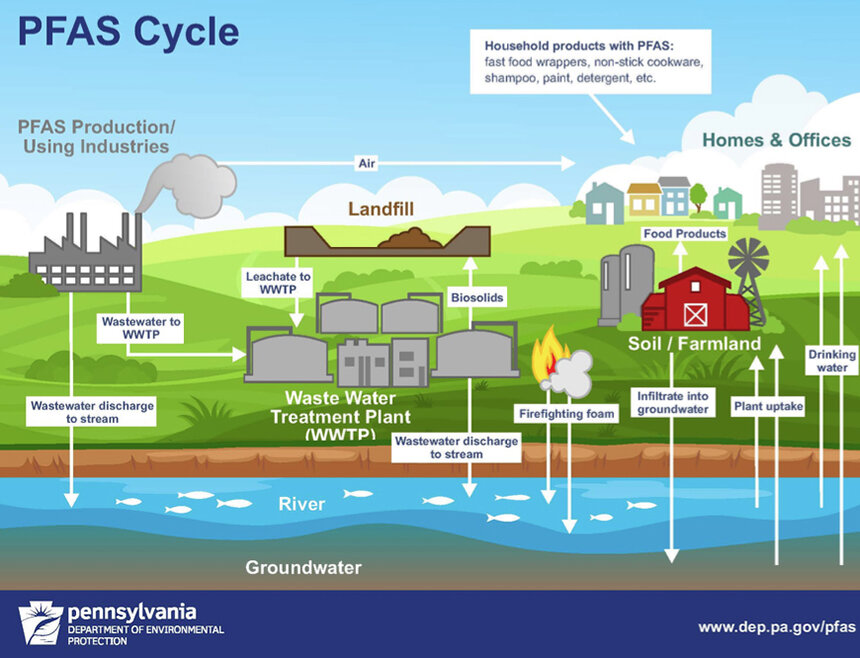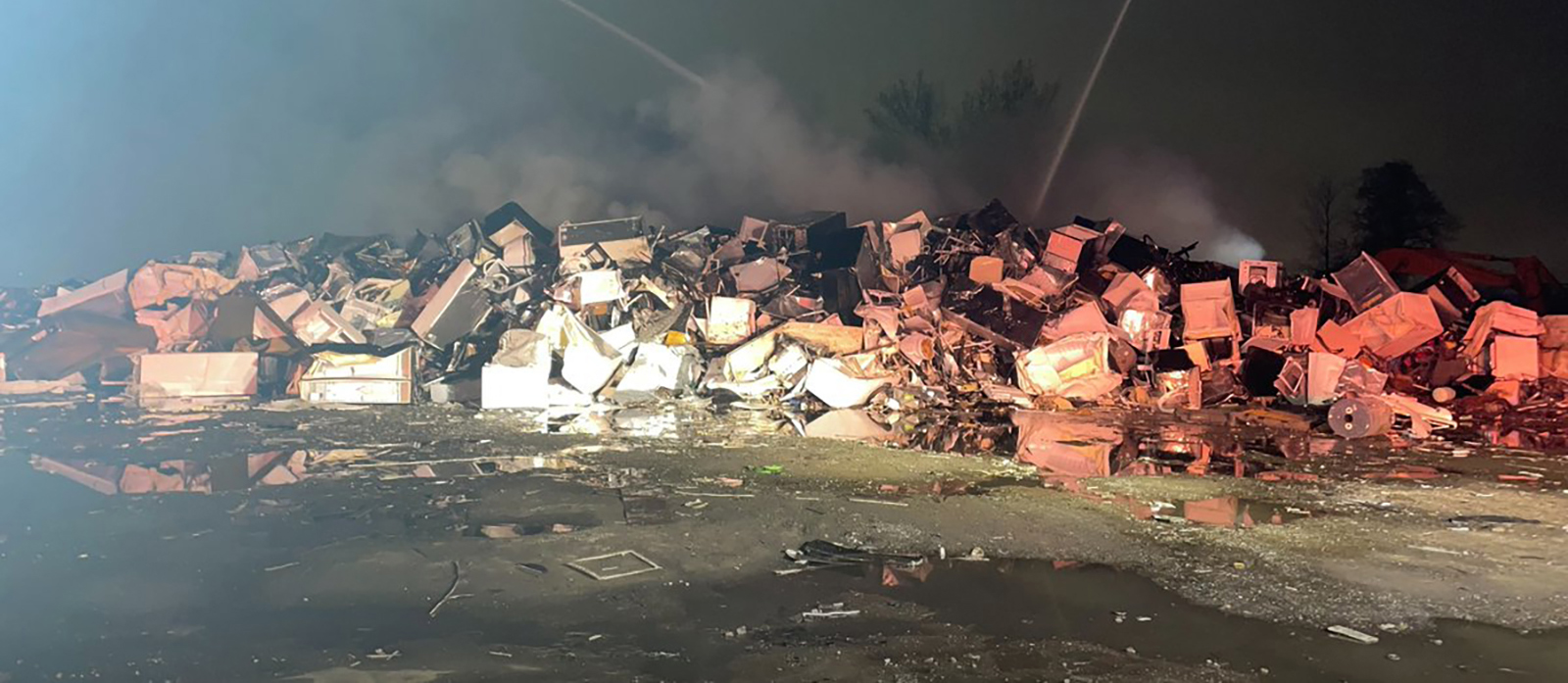Enjoy Some Alphabet Soup with Your Chocolate
March 14, 2011
A kiss is just a kiss — unless it’s a Hershey’s Special Dark Chocolate Kiss. In which case, pucker up for a mouthful of PGPR.
PGPR, which began showing up on the ingredient list of drugstore chocolate several years ago, is short for polyglycerol polyricinoleate, a goopy yellowish liquid made from castor beans that reduces the viscosity of chocolate. Since 2006, big chocolate manufacturers such as Hershey’s have been replacing the expensive raw ingredient cocoa butter with PGPR in their recipes.
In many ways, the story of PGPR in chocolate is but a small chapter in a larger narrative about how convoluted our industrial food system has become: an alphabet soup of fillers and cheap ingredients that challenge the original definition of the product they seek to emulate, questionably sourced raw materials, and a cast of large corporations attempting to appeal to the lowest common denominator acceptable for human consumption to keep costs low and profits high.
PGPR is manufactured by Danisco, which DuPont is in negotiations to buy, and by Palsgaard, an international corporation specializing in emulsifiers and stabilizers for the food-processing industry. A statement regarding PGPR on that company’s website reads, “Cocoa butter is an expensive raw material for chocolate manufacturers. By using Palsgaard4150 (PGPR) the chocolate recipe has lower costs in terms of less cocoa butter.”
In other words, PGPR is a way for chocolate manufacturers to get around the hassle and expense of actually putting chocolate in their chocolate.
A quick survey of the candy aisle at a local CVS revealed PGPR in most chocolate products: Reese’s, Mounds, Kit Kat, Cadbury Dairy Milk and Hershey’s Special Dark, among many others.
But is wasn’t always this way. The story of chocolate starts with a cacao pod, which is harvested from a cacao tree — a tropical plant that grows only within 20 degrees latitude of the equator. Once harvested, the pod is split, and the cocoa beans are scraped out and left to ferment in the sun for up to eight days.
After fermentation, the beans are dried, roasted, winnowed and shelled to reveal the cacao nib, the essential ingredient in chocolate. Real chocolate is made when these dried, roasted cacao nibs are ground and processed into a thick paste called cocoa liquor, which contains cocoa butter and cocoa solids. The cocoa liquor is then pressed to remove the cocoa butter, yielding a powdery disk of cocoa solids known as a presscake. Cocoa butter is then added back into the cocoa solids and the resulting amalgam gets a hit of sugar and, perhaps, vanilla and is then conched, or kneaded, in a conical-shaped piece of machinery to further refine the product.
Many companies are still making chocolate this way, including the Massachusetts-based worker-owned cooperative Equal Exchange.
When asked recently about PGPR, Equal Exchange’s Rodney North replied, “Yes we’ve heard of it, and no we don’t use it. We don’t use any of those additives.
“There are two main motivations for those polysyllabic ingredients. One, to cut costs. Two, to create something that’s incredibly shelf stable. That stuff can sit on a gas station shelf for months. We’re not interested in that. We’re interested in honest ingredients that taste great and do right by the farmers and the farmland.”
The Food and Drug Administration (FDA) has officially deemed PGPR safe for human consumption, setting the accepted daily intake from 0 to 7.5 milligrams per kilogram of body weight. Short-term studies on rats and chickens showed reversible liver enlargement as a result of higher doses of PGPR, but those were deemed a result of increased hepatic workload.
Soy lecithin, the darling of the food-processing industry, has long been used as an emulsifier in chocolate, but it recently began to increase in cost, as the demand for the non-GMO version has increased worldwide.
Palsgaard, seeing an opportunity, responded with a new emulsifying agent. A press release dated last March and posted on foodingredientsfirst.com touts a new product that seeks to replace soy lecithin: AAMP 4448, or ammonium photosphatide, which is produced from ammonia and phosphorylated fatty acids from rapeseed oil. It was approved by the FDA in 2007.
“Palsgaard AMP 4448 … can be used in all cocoa based applications. Being able to reduce the cocoa butter content by up to 4 percent opens up for great innovation potential. … Even more radical recipe adjustments are possible when combining Palsgaard AMP 4448 with PGPR and other Palsgaard chocolate emulsifiers. In this way it is possible to achieve even greater cost savings,” according to the March 2010 press release.
The release also states that AMP 4448 has the benefit of being non-GMO.
And so the plot thickens, so to speak. Take out raw ingredients and replace them with additives and then replace those additives with other less-expensive additives when the first generation of additives becomes too expensive.
Greasing palms
Big Chocolate has historically tried many ways to reduce cocoa butter in its products, not just with emulsifiers, but also with other oils, including palm oil — the production of which has been documented as a cause of deforestation and habitat loss of critically endangered species, such as the orangutan and Sumatran tiger.
In 2007, the Chocolate Manufacturers Association, of which Hershey’s is a member, petitioned the FDA to change the legal definition of chocolate to enable producers to use partially hydrogenated vegetable oils in their products in place of cocoa butter.
The FDA ultimately denied the request, and as a result, Hershey’s was forced to re-label some of its products as “chocolatey” or “made with chocolate.” In the United States, when a chocolate bar doesn’t include cocoa butter or includes other oils, it can’t actually be labeled chocolate.
Currently, the federal government requires a 10 percent concentration of chocolate liquor in order for a product to qualify as milk chocolate. The more-stringent guidelines of the European Union require a 25 percent concentration of chocolate liquor.
The use of oil in place of cocoa butter not only degrades the quality and definition of chocolate, but it also eats into the profits of vulnerable cocoa farmers who are at the bottom of the food chain in the chocolate production process, which brings us to one of the darkest ingredients of Big Chocolate: forced labor.
Toothless laws and toothsome profits
In 2001, the use of child labor in the cocoa sector in West African countries, which supply roughly 70 percent of the world’s cocoa, came under increasing scrutiny, with reports that the industry was profiting from the use of child labor and forced labor on cocoa farms.
In response, U.S. lawmakers initially proposed a bill to require chocolate manufacturers to participate in a “child labor free” labeling system. Under pressure from industry, the major chocolate companies instead signed a voluntary agreement in 2001 known as the Harkin-Engel Protocol, which laid out a July 2005 deadline for major chocolate companies to establish a public certification system to ensure that their cocoa was grown and/or processed without child labor.
But, in the end, the voluntary and non-binding Harkin-Engel Protocol had no teeth and left the chocolate industry to police their own actions. The July 2005 deadline came and went with the key promises of the protocol left unmet.
The International Labor Rights Fund filed a lawsuit against Nestle, Cargill and Archer Daniels Midland on behalf of a class of Malian children who were trafficked to the Ivory Coast and forced to work on cocoa farms for up to 14 hours a day with no pay.
As recently as 2009, a report from the U.S. Department of Labor included cacao grown in Ivory Coast, Nigeria, Ghana, Guinea and Cameroon on the “List of Goods Produced by Child Labor and Forced Labor.”
According to Hershey’s 2009 Corporate and Social Responsibility Report, the company asserts that it has taken steps “to increase farm-level incomes, build community sustainability and address the troubling issue of child labor in cocoa-producing regions. As a founding member of the World Cocoa Foundation (WCF), the International Cocoa Initiative (ICI) and the WCF’s ECHOES (Empowering Cocoa Households with Opportunities and Education Solutions) Alliance, we work with industry peers to address these challenges in a collaborative manner.”
The report cites the Harkin-Engel Protocol as one of the achievements in this area.
Currently, TransFair and the Institute for Marketecology (IMO) are the only third-party certifiers of fair-trade products in the United States. Such a certification ensures the consumer that no forced or abusive child labor was used in manufacturing a product. The fair-trade certification system also attempts to promote long-term business relationships between buyers and sellers, crop pre-financing and greater transparency throughout the supply chain.
Categories
Join the Discussion
View CommentsRecent Comments
Leave a Reply
Related Stories
Your support keeps our reporters on the environmental beat.
Reader support is at the core of our nonprofit news model. Together, we can keep the environment in the headlines.
We use cookies to improve your experience and deliver personalized content. View Cookie Settings




Joanna,
In 10+ years of working with journalists in regards to the chocolate industry this is one of the best pieces of reportage I've seen, and one of the very few that looked into the consequences of all the odd ingredients used by the large brands.
To your piece I've just a few items to add.
One, folks can learn more about the still unresolved problems regarding child labor in the cocoa industry by visiting this page on our website http://www.equalexchange.coop/reverse and at the International Labor Rights Forum http://www.laborrights.org/stop-child-labor/cocoa-campaign
Also, to draw attention to the problem of forced child labor, and the Fair Trade cocoa alternative, each Halloween Equal Exchange helps to organize and fund the "Reverse Trick-or-Treating" campaign here in RI and across the country. See: http://www.EqualExchange.coop/rtt
As for the efforts of the industry – they have consistently been found by labor advocates and outside analysts (inlcuding those hired by the US Dept. of Labor) to be woefully inadequate, despite 10 years of promises. See http://www.laborrights.org/stop-child-forced-labor/cocoa-campaign/resources/12407
Lastly, there is now a 2nd Fair Trade certifier, IMO, active in the US. This happens to be the one we at Equal Exchange now use for our cocoa, sugar and chocolate.
Rodney, thank you for the information. Much appreciated. We have added IMO information to the story.
I've found Green & Blacks Organic Chocolate to be (by far) the best chocolate bar around. All organic and fair trade ingredients, found at local Stop & Shops. Check out their website: http://www.greenandblacks.com/us/. A great rule of thumb; if you don't understand the ingredients list, don't buy it!!!
Thank you, Joanna for this elucidating article. I stumbled on it by Googling PGPR (WTF?!) as I was contemplating whether or not to eat the peanut butter cup that contained it. I ate it anyway…whoops. It was gross. It’s back to Equal Exchange and Green and Black’s et. al. Thank goodness Halloween is behind us for now!
Funny, I got here by googling the same ingredient in I’m guessing the same brand of peanut butter cup. And I also ate it anyway. It was not gross, but doesn’t seem to need all the preservatives.
I am so disgusted with the Greed of these companies. They know these additives are bad for humans but they don’t care!
All these companies care about is MONEY! I will never buy Hershey’s Chocolate again. There are many real chocolates with real safe ingredients.